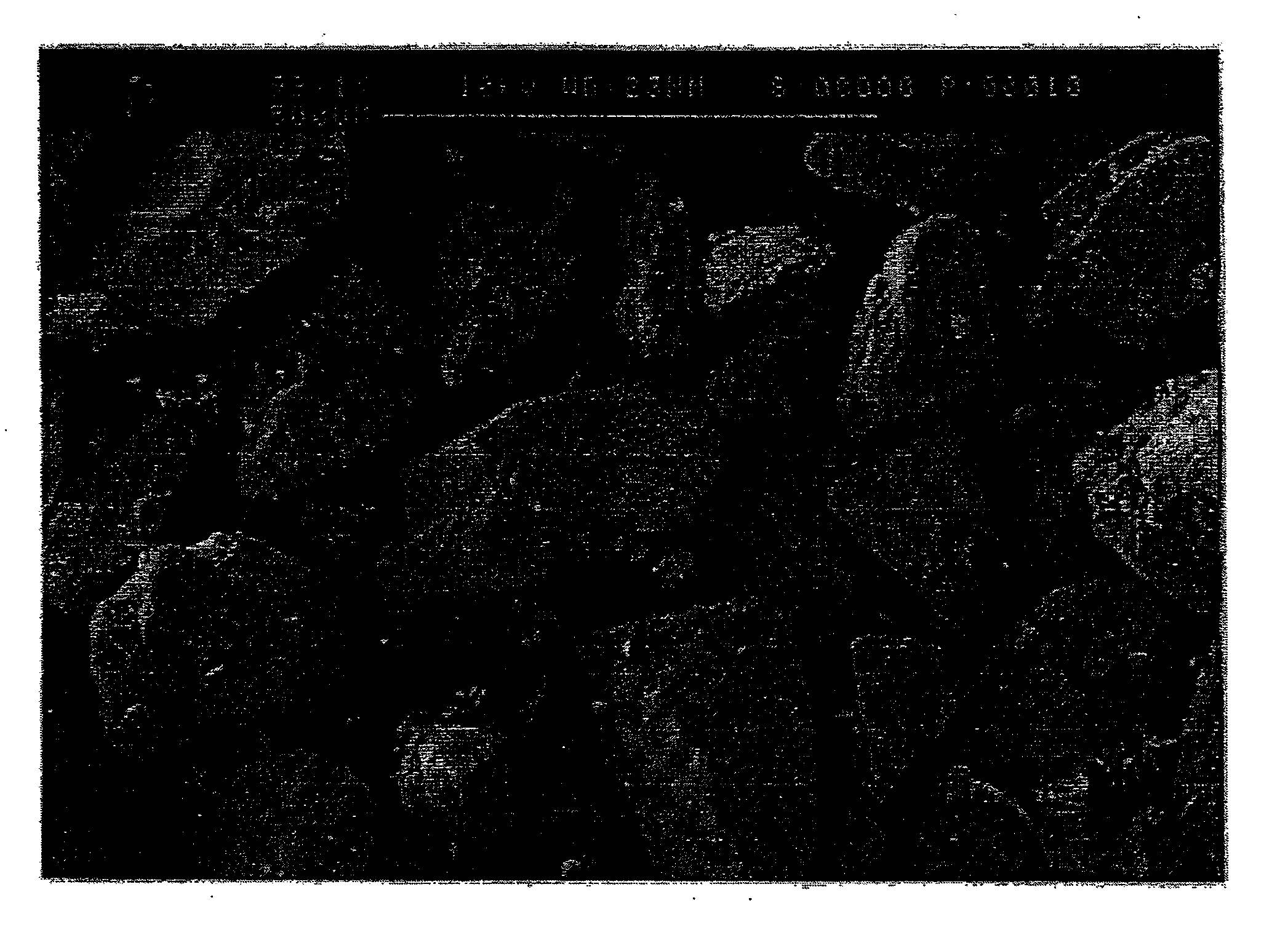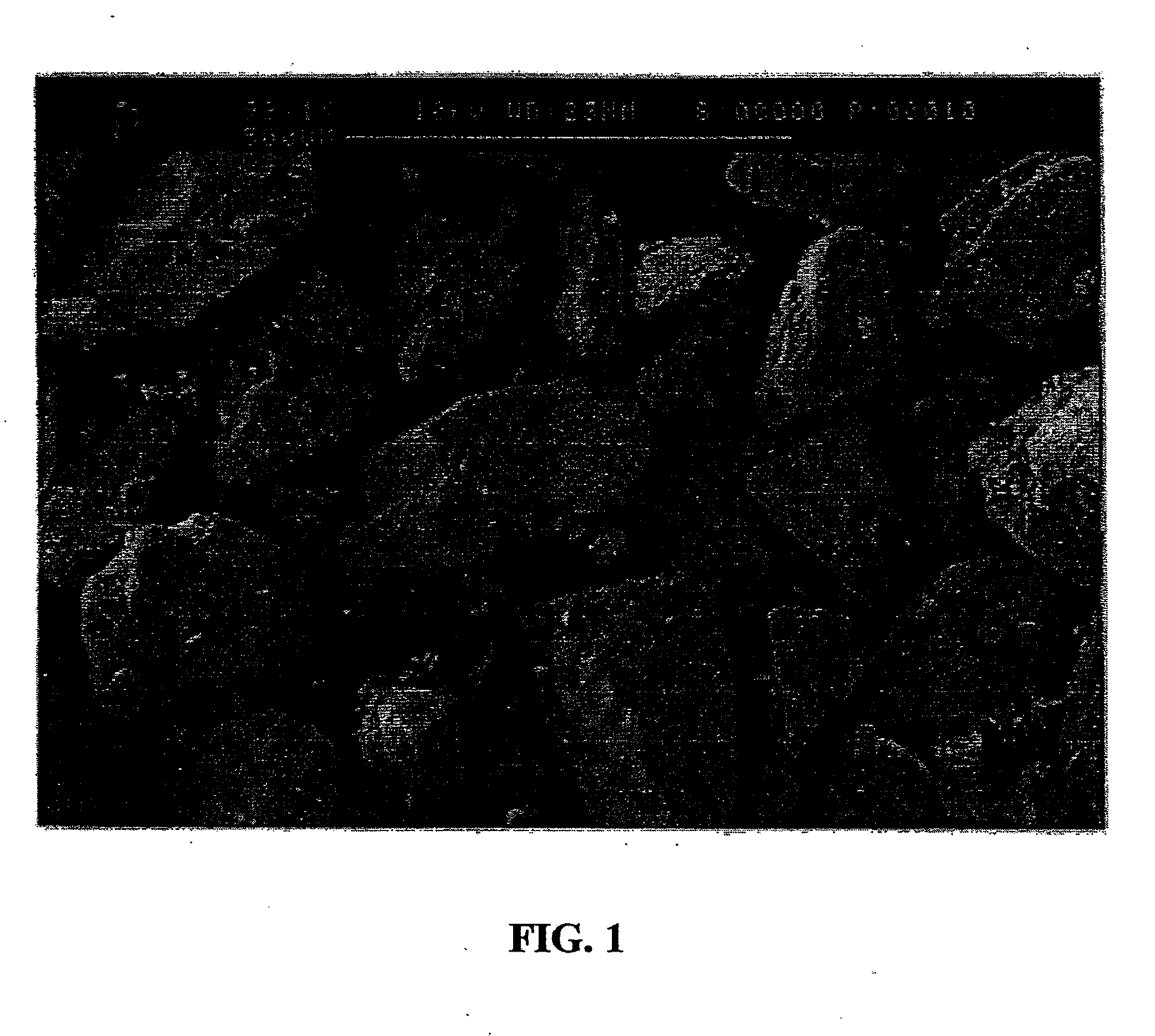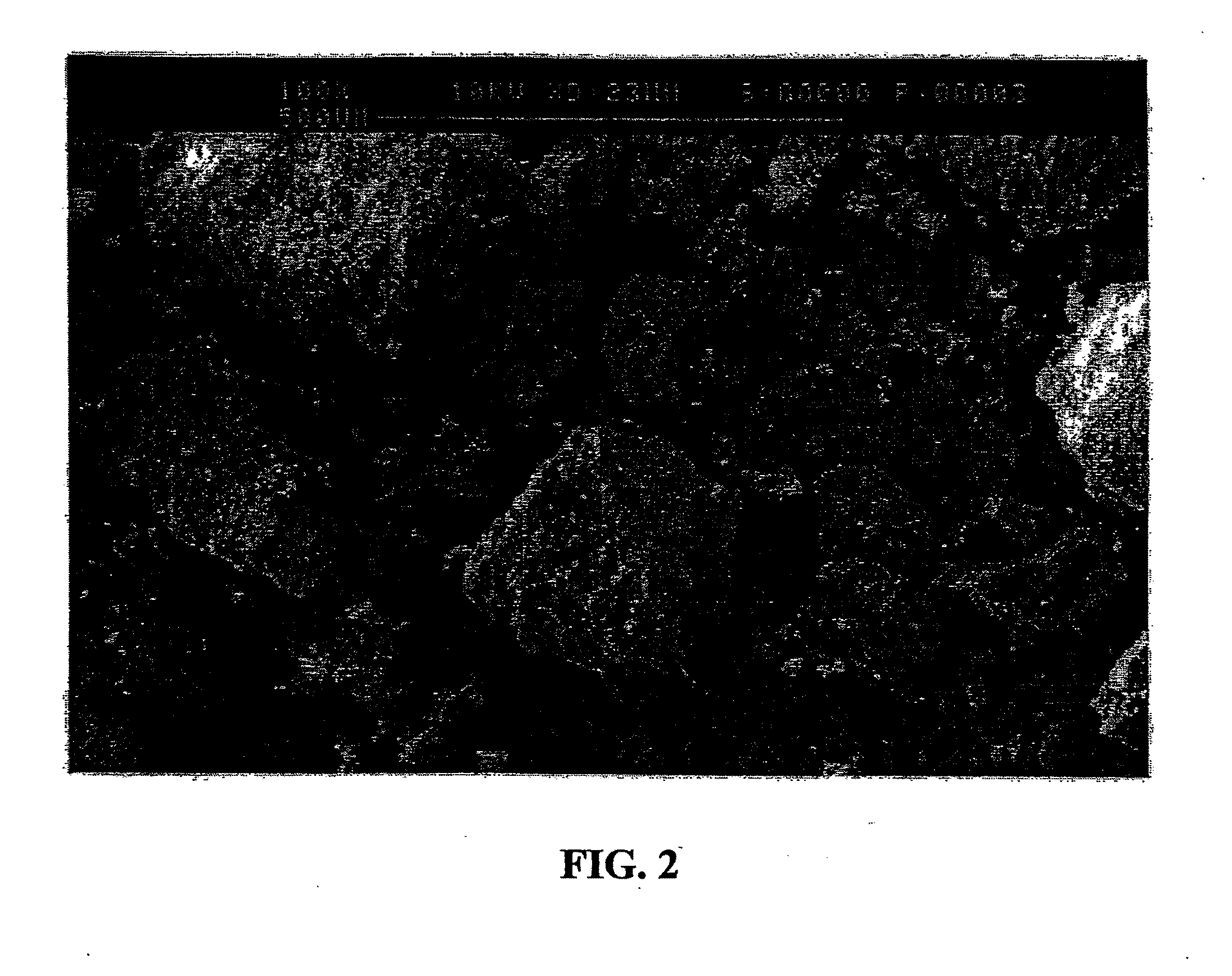Method for Purification of Lactose
a technology of purification method and lactose, which is applied in the field of improved methods of purification of sugars, can solve the problems of unsuitability of lactose obtained by such a method, increase the time and cost of production, and the relative slow process, so as to achieve a simple and economical process and achieve higher lactose purity
- Summary
- Abstract
- Description
- Claims
- Application Information
AI Technical Summary
Benefits of technology
Problems solved by technology
Method used
Image
Examples
example 1
Primary Demineralisation
[0065]The calcium-treatment step is the first part of the AAC process, which comprises 5 unit steps. The raw material for the AAC process can be whey coming from the manufacture of cheese. The chemical composition of cheese whey is described in table 1 with data from both the literature and experiments.
[0066]When cheese whey is used, it is first sieved to remove fines, centrifuged to remove fat, pasteurized and then ultrafiltered producing 2 streams: ultrafiltration (UF) retentate and whey permeate. The UF retentate has preferably 12% solids and 5.2% lactose. The ash of this UF retentate is 0.99%+ / −0.13. The whey permeate chemical composition is presented in table 2.
[0067]The next step is called primary demineralisation. It is the first critical step of the process. The whey permeate is neutralised to pH 7 by addition of Calcium Chloride and Sodium Hydroxide or Calcium Hydroxide. The whey is then heated to 60° C. and kept at this temperature for 15 minutes du...
example 2
Alcohol Addition Step
[0073]The AAC process includes an alcohol treatment of the concentrated nanofilter retentate (CNR) as a further demineralisation step, followed by filtration, crystallisation, washing and drying of the crystals.
[0074]As an example, the basic unit operations for the alcohol addition stage of the AAC process, include:
[0075](1)—Pumping 40 Kg of the CNR at a flow rate equivalent to 4 Kg / min from a storage tank, through a heat exchanger to bring the CNR from 45° C. to 78° C., and into the first stirred tank called the “demineraliser”.
[0076]—Pumping 30 L 100% ethanol (volume of ethanol to add is 60% of total liquid [water+ethanol]) at a flow rate equivalent to 3 L / min from a storage tank, through a heat exchanger to bring the ethanol from room temperature to 78° C., and into the demineraliser.
[0077](2)—Demineralising the alcoholic CNR by leaving it under reflux at 78° C. and low stirring for one to 15 minutes. A condenser fitted on the lid of the demineraliser tank, c...
example 3
Properties of Lactose
[0086]The pharmaceutical applications study first involved the evaluation of the physico-chemical properties of 4 pharmaceutical grade lactose powders:[0087]The AAC lactose; and[0088]3 other commercially available products:[0089]Pharmatose, DMV, roller dried, high beta content, anhydrous lactose. USP-100 mesh alpha lactose monohydrate from Wyndale New Zealand. Supertab, Wyndale New Zealand, spray dried, mix of alpha lactose monohydrate and amorphous lactose.
[0090]While there are records in the literature of extensive testing of many of the commercially-available pharmaceutical grade lactoses, it was important to validate the tests on the AAC lactose by performing the same tests at the same time on the commercial products.
[0091]The physico-chemical properties that were studied were:[0092]The particle shape of the crystals by scanning electron microscopy.[0093]The particle size by laser diffraction (Malvern Particle Sizer).[0094]The bulk density (mass of known vol...
PUM
| Property | Measurement | Unit |
|---|---|---|
| temperature | aaaaa | aaaaa |
| temperature | aaaaa | aaaaa |
| temperature | aaaaa | aaaaa |
Abstract
Description
Claims
Application Information
 Login to View More
Login to View More - R&D
- Intellectual Property
- Life Sciences
- Materials
- Tech Scout
- Unparalleled Data Quality
- Higher Quality Content
- 60% Fewer Hallucinations
Browse by: Latest US Patents, China's latest patents, Technical Efficacy Thesaurus, Application Domain, Technology Topic, Popular Technical Reports.
© 2025 PatSnap. All rights reserved.Legal|Privacy policy|Modern Slavery Act Transparency Statement|Sitemap|About US| Contact US: help@patsnap.com



